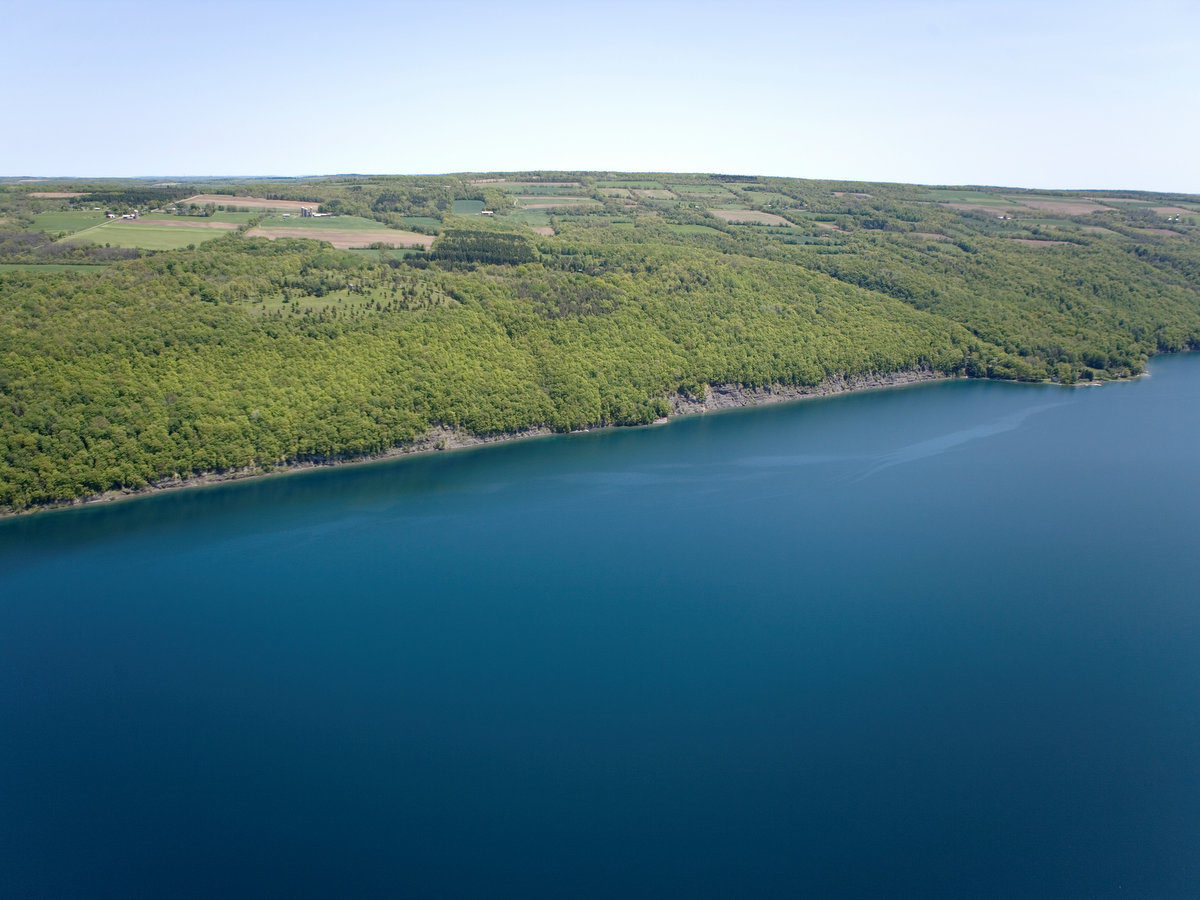Water Quality > 3 Nonprofits Join Forces
A coalition of The Nature Conservancy, the Finger Lakes Land Trust, and the Skaneateles Lake Association aims to combat harmful algal blooms and implement restoration projects to safeguard the watershed.
Harmful algal blooms (HABs) have become a significant water quality concern for the Finger Lakes region. They prevent people from swimming, fishing, and boating, and can cause entire shorelines to shut down, reducing tourism and public recreation. They can also threaten our drinking water supply. Skaneateles Lake, which serves as the unfiltered source of drinking water for over 200,000 households in neighboring municipalities and the City of Syracuse, experienced HAB outbreaks in September 2017 and again in August through October 2018.
In response to these outbreaks, three local nonprofits — The Nature Conservancy, Finger Lakes Land Trust, and Skaneateles Lake Association — have come together to identify the main sources of HABs in the region, support local organizations working to address HABs, and help solve water quality problems in the watershed.
By collaborating with the City of Syracuse, Cornell Cooperative Extension of Onondaga County, Onondaga County Soil and Water Conservation District, NYS Department of Environmental Conservation, Syracuse University, SUNY ESF, Finger Lakes Institute, and other groups the coalition hopes to protect the local watershed and improve quality of life for people in the region for decades to come.
HABs are occurring in the Finger Lakes in part because past land uses have caused a buildup of nutrients such as nitrogen and phosphorous at the bottom of lakes. Skaneateles Lake is classified as ‘oligotrophic’, as it has low productivity due to low levels of nutrients. This helps keep algae and other aquatic vegetation to a minimum and keeps the water clear. In fact, Skaneateles Lake was widely thought to be immune to HABs — until the first bloom occurred. A variety of causes including the changing climate, degraded tributaries and invasive species, are all thought to play a role.
But nature can offer solutions; protecting and restoring lands and waters can help reduce the nutrients that cause blue-green algae blooms. That is why the coalition is collaborating on ongoing landowner engagement and outreach, remediation and restoration projects, and grant funding.
“SLA is thrilled to have Finger Lakes Land Trust and The Nature Conservancy working closely with us in the watershed,” said Rachael DeWitt, Skaneateles Lake Association Executive Director. “Each of us brings an area of expertise to the table, and as a result, we are stronger when we work together.”
“We couldn’t accomplish our conservation goals without the help of our partners,” said Andy Zepp, Executive Director of the Finger Lakes Land Trust. “We are excited to coordinate together on projects that help protect the watershed.”
“By working together, we can harness the power of nature to filter out nutrients before they reach our lakes, ensuring that local communities have access to clean water,” said Jim Howe, The Nature Conservancy’s Central and Western New York Chapter Director. “This collaboration will allow all of our organizations to do more, faster.”
The Three Organizations
The mission of the Skaneateles Lake Association (SLA) is to protect the Skaneateles Lake ecosystem and the quality of its waters and promote environmentally sound regional management of its watershed. SLA’s mission, while driving long term and preventive elements, also drives direct, sometimes immediate actions in response, to current threats. While SLA sees and acknowledges the impact of threats and issues for the entire Finger Lakes Community and all of nature, the SLA is focused solely on Skaneateles Lake and its watershed. SLA is in its 50th year as an organization, and is in it for the long haul. Additional information about the Skaneateles Lake Association can be found at SkaneatelesLake.org.
The Finger Lakes Land Trust is a member-supported conservation organization working across 12 counties to conserve forever the lands and waters of the Finger Lakes region, ensuring scenic vistas, local foods, clean water, and wild places for everyone. We have already completed 15 land and water conservation projects within the Skaneateles Lake watershed – protecting more than 1,000 acres, 2,000 feet of shoreline, and 9 miles of streambank along important tributaries to the lake. Please learn more about our efforts to protect Skaneateles and the Finger Lakes at fllt.org.
The Nature Conservancy is a leading conservation organization working around the world to protect ecologically important lands and waters for nature and people. To date, the Conservancy and its more than one million members have been responsible for the protection of more than 119 million acres worldwide. Visit The Nature Conservancy on the web at nature.org.


